
How to Apply the Free Shipping Model: All You Need to Know
What do you think people look at when they are online shopping? Price is one of the most important factors, but the second most important is your shipping policy. In a post-pandemic, always online age, the expectations for shipping times have never been higher. That’s why, if you have the resources available, being able to offer free shipping is important, if not essential, for your business to thrive. Read on to find out how to apply the free shipping model for your ecommerce store
Why is free shipping important to consider for your ecommerce store?
Shipping is one of the most important aspects of ecommerce fulfilment, and your available shipping options will make or break your customer relations. In a 2019 report by Big Commerce, 77 per cent of survey respondents reported abandoning their purchases due to unsatisfactory shipping options, while 39 per cent stopped shopping with an online retailer due to a poor shipping experience.
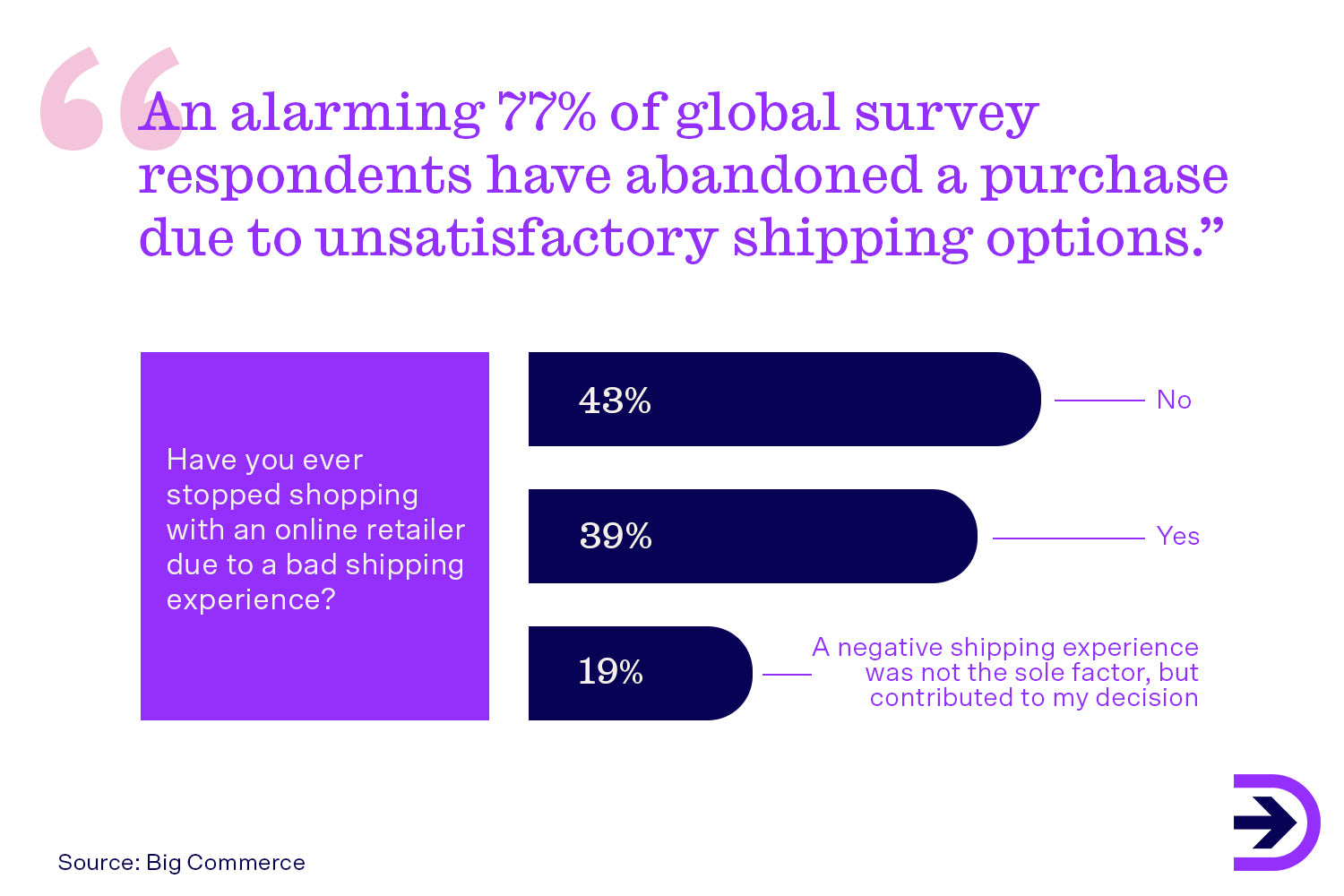
The current state of shipping can largely be attributed to Amazon’s success. The ecommerce giant captures 49 per cent of online spending in the US and about 5 per cent of all US retail sales. It also boasts excellent shipping and logistics services, with 75 fulfilment centers in North America alone at the time of writing. It’s no surprise that an influential company such as Amazon would also set the bar when it comes to shipping expectations. When Amazon Prime launched in 2005, it offered free two-day shipping on certain products. This benefit has now been adopted en-masse, not just by Amazon but by other competing big box retailers. Now, customers have increasing expectations for fast, convenient and affordable shipping when they purchase online, and they are willing to shop around to find the right deal.
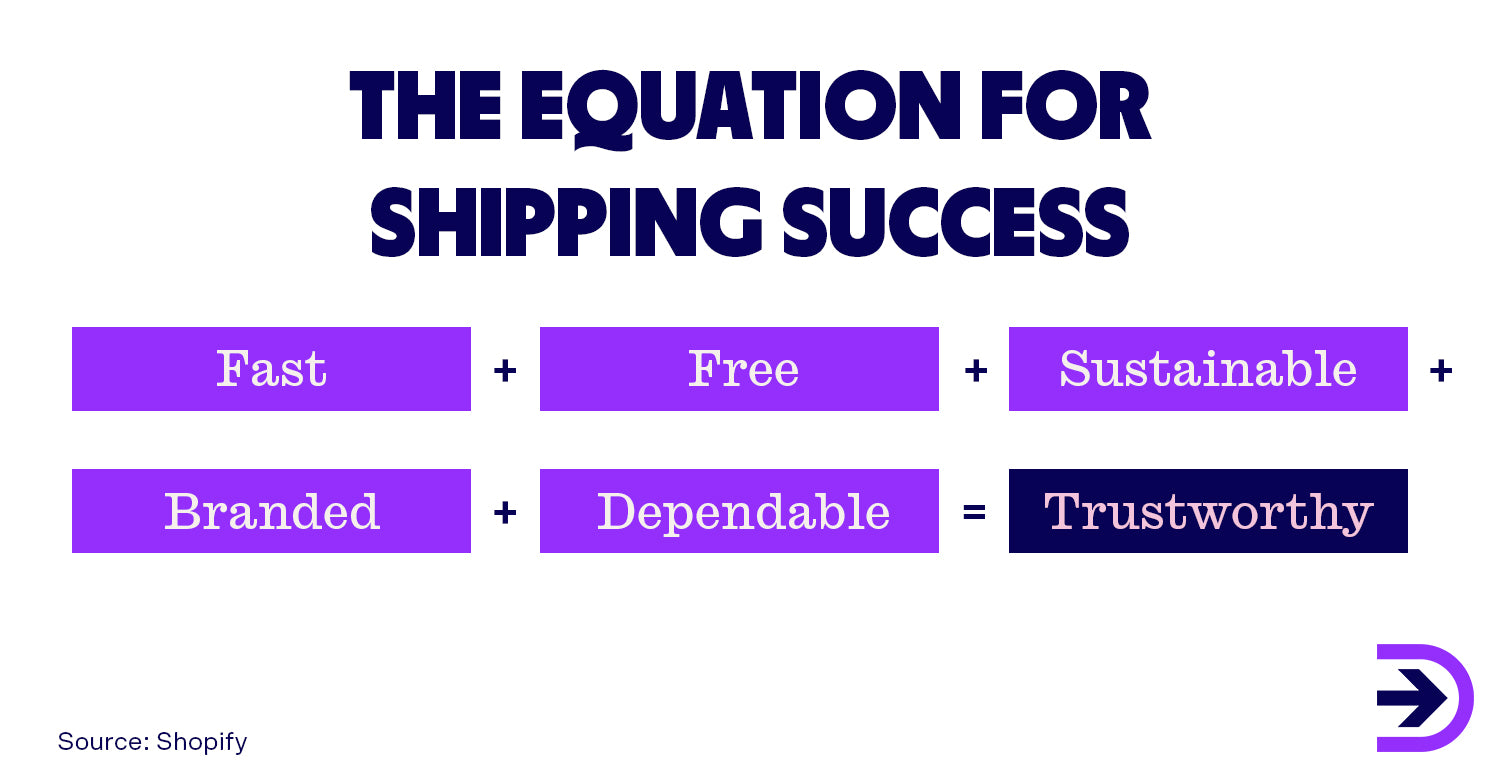
While free shipping might seem like a neat perk, it’s slowly becoming an expectation for online retailers and ecommerce stores. According to the Shopify Future of Commerce Trend Report 2022, free shipping promotion continues to have a significant impact on purchasing for 75 per cent of global customers. If you’re not offering free shipping, you’re missing out on a ton of revenue, and not just from those abandoned carts. 84 per cent of online shoppers put additional items in their cart to qualify for free shipping. Some ecommerce stores, like Amazon, offer premium memberships that give access to free and speedy delivery. Adding visible free shipping promotions to your site can increase your conversion rate by as much as 20 per cent. There are endless reasons why offering free shipping, even if it’s not store-wide, is a great choice for your business.
Why does free shipping work?
Free shipping is such an effective tool for ecommerce thanks to psychology.
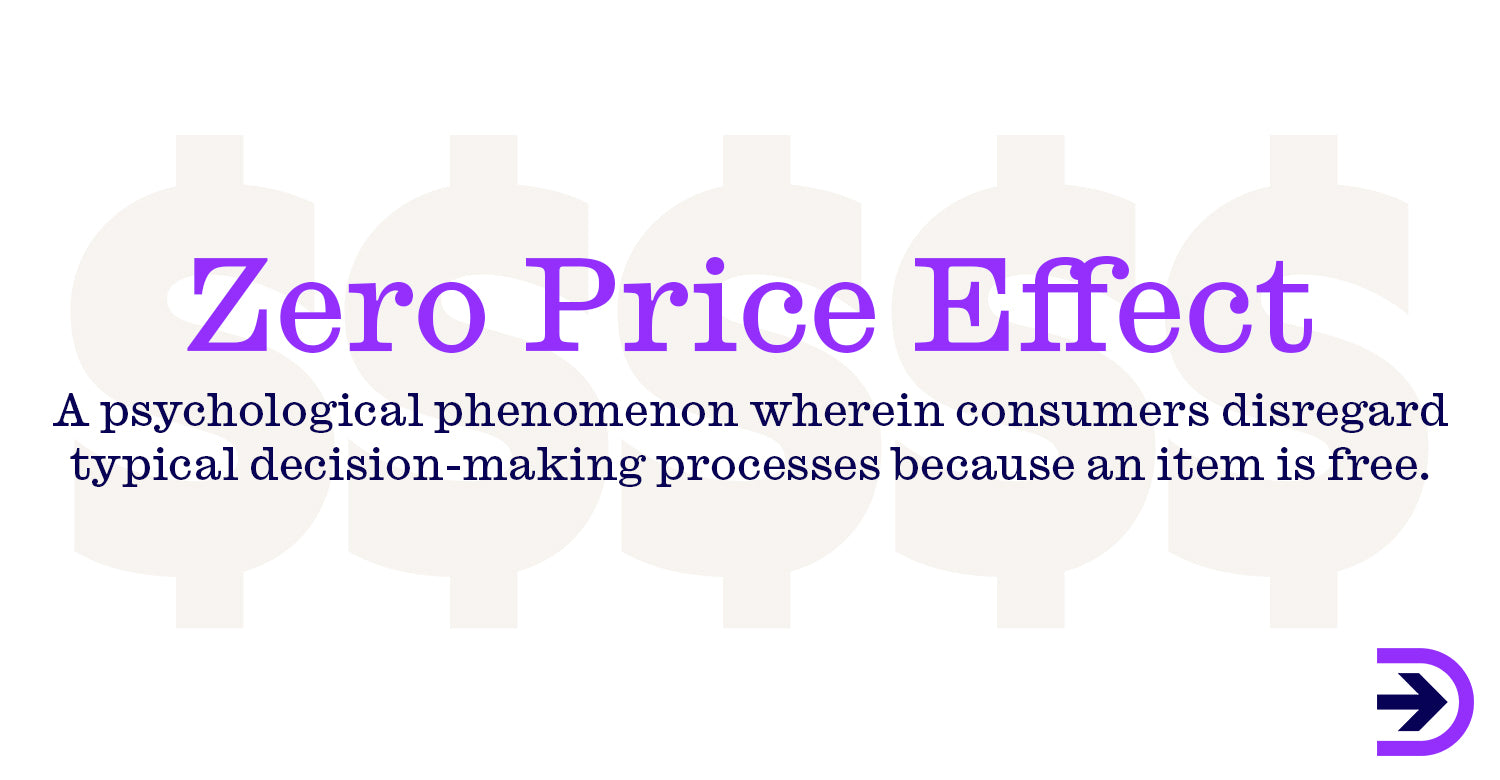
The ‘zero price effect’ is a psychological phenomenon wherein consumers disregard typical decision-making processes because an item is free. Our perception of free items is distorted under the zero price effect: because we don’t have to pay for them, we emphasise their benefits and ignore any downsides. That’s why we are more likely to buy products that come with free add-ons, interact with companies that hand out free swag, and pay more for products which offers free shipping. You'll be surprised what online shoppers will be willing to do or pay for to receive free shipping.
How does your ecommerce store apply the free shipping model?
It can seem daunting to implement free shipping policies to your ecommerce business, especially with shipping costs as they are, but there are many ways you can offer free shipping without losing money. Here are some tips you can use to increase your net profit margins and find the right shipping strategy for your online business.
Increasing product price
You can cover the cost of shipping by increasing the price of your products across the board. It might seem counter-intuitive to raise prices in such a competitive market, especially if your brand revolves around budget products, but when executed correctly there will be great long-term benefits. While a price increase may lower your conversion rates, it will likely raise the average order value and your net margins. You can implement this strategy in a variety of ways - you can use automated repricers, or run a cost-benefit analysis on specific products to help determine the best price for maximum profit.
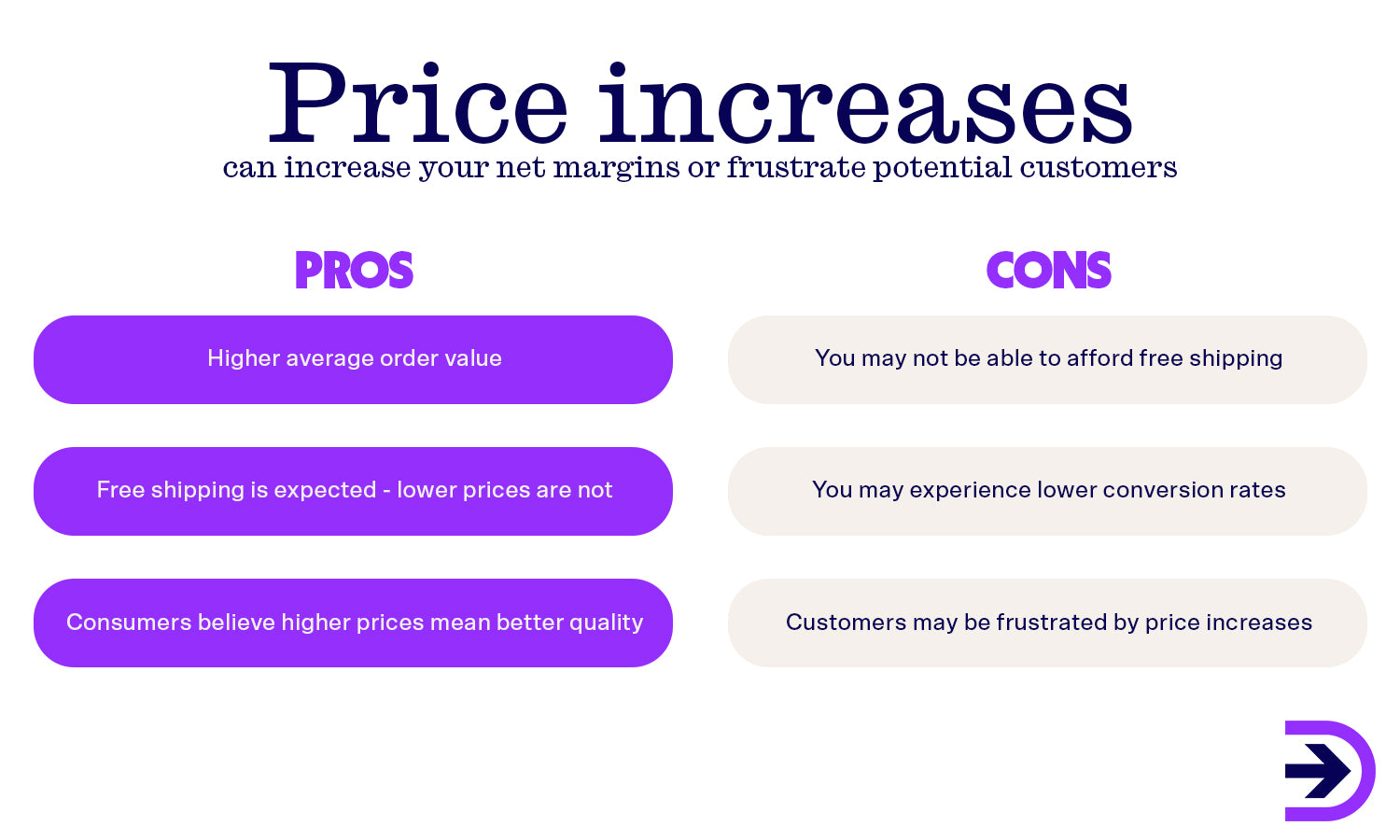
Whether this strategy is effective or not for your business depends on the type of marketplace you sell on, the products you sell, and even seasonal changes.
Pros of increasing product price:
The average order value will be higher.
Free shipping is expected - lower prices are not.
For certain products, consumers believe that higher prices equal higher quality.
Cons of increasing product price:
You may not be able to afford unconditional free shipping.
You may experience lower conversion rates.
If your customer base is made up of millennials, they are less likely they are to prefer free shipping over discounted products.
Customers may be frustrated by price increases on their favourite products.
Understanding & increasing customer lifetime-value (LTV) retention strategies
Life Time Value (LTV) or Customer Lifetime Value (CLV) is a marketing metric that represents the total amount spent by a customer over their lifetime. You can calculate LTV for a single customer by adding the total revenue per month multiplied by the number of months they’ve been a customer. The average LTV can be calculated by dividing the average revenue per user by your company’s churn rate.

Why is understanding LTV important? This metric represents how much money you’re making relative to your customer acquisition cost (CAC). The higher your LTV to CAC ratio, the more money you’re getting back for every dollar spent on acquiring new customers. You’ll want to have these numbers handy when you’re developing pricing strategies, doing customer research, and tracking your successes. With increased LTV you will increase profits, increase conversions, and have more opportunities to offer free shipping.
There are several strategies you can use to increase your LTV.
Engage with your customers
There are many ways you can engage with customers to improve your LTV. Use emails and social media marketing to advertise new products and discounts, send out newsletters, or simply remind them of their purchase. Survey them for feedback on your products and where you can improve as a business. You may even want to ask them what shipping price they'd be willing to pay for faster shipping - this could give you an idea of whether free shipping is the deal shipping option for you.
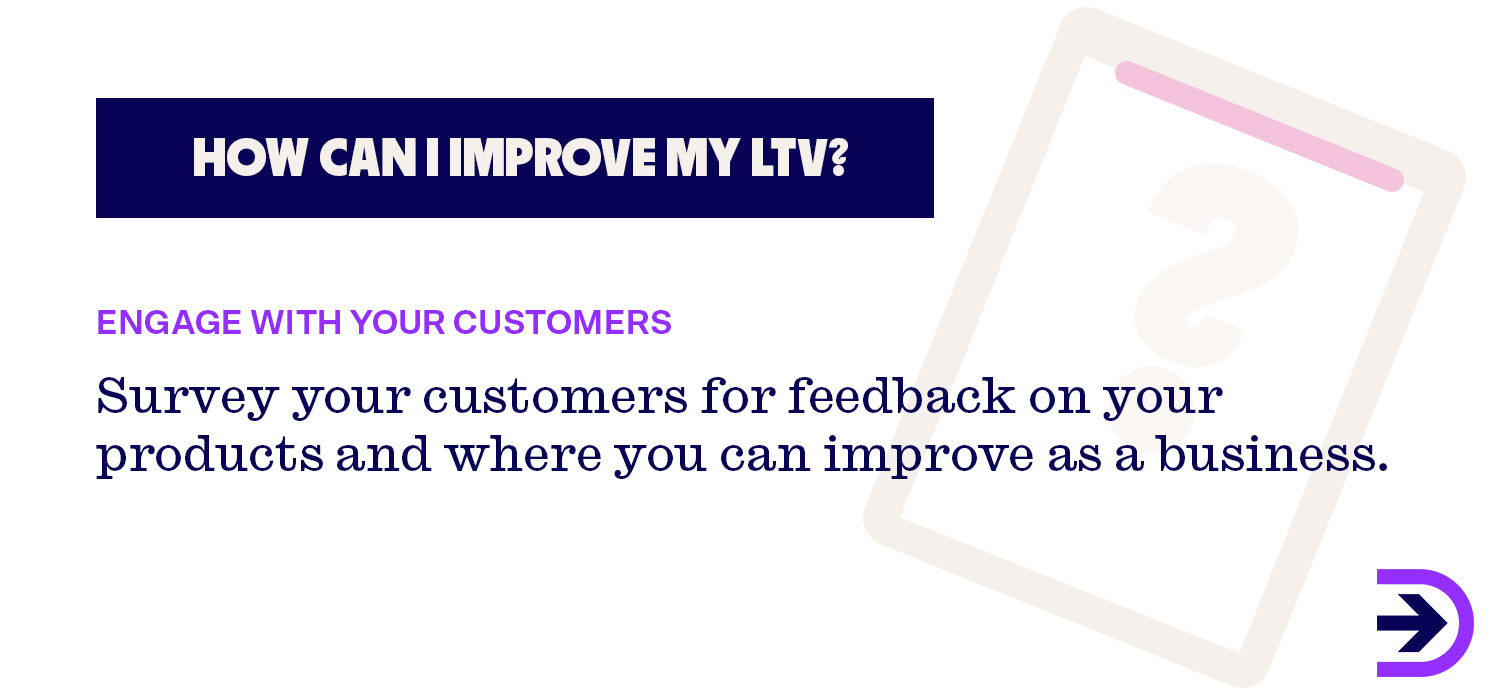
Focus on continuously improving
While as a dropshipper you don’t have direct influence over the product, you do have control over the range of products, the shopping experience, and customer satisfaction. Improving these might mean adding new product lines, updating your product pages, or sourcing new suppliers. You should also be continuously working to improve the shopping experience, which can mean anything from improving your UX design to streamlining the purchasing process. Finally, ensure your customer service is always up to scratch with prompt replies and conflict resolution.
Implement a loyalty program
Offer returning customers something in return for repeat purchases. This could be a point system, access to higher or more frequent discounts, gift cards or cashback. You might even offer additional gifts for sharing social media posts, leaving a review, filling out a survey, or staying with the company for a year or longer.
Nail your returns policy
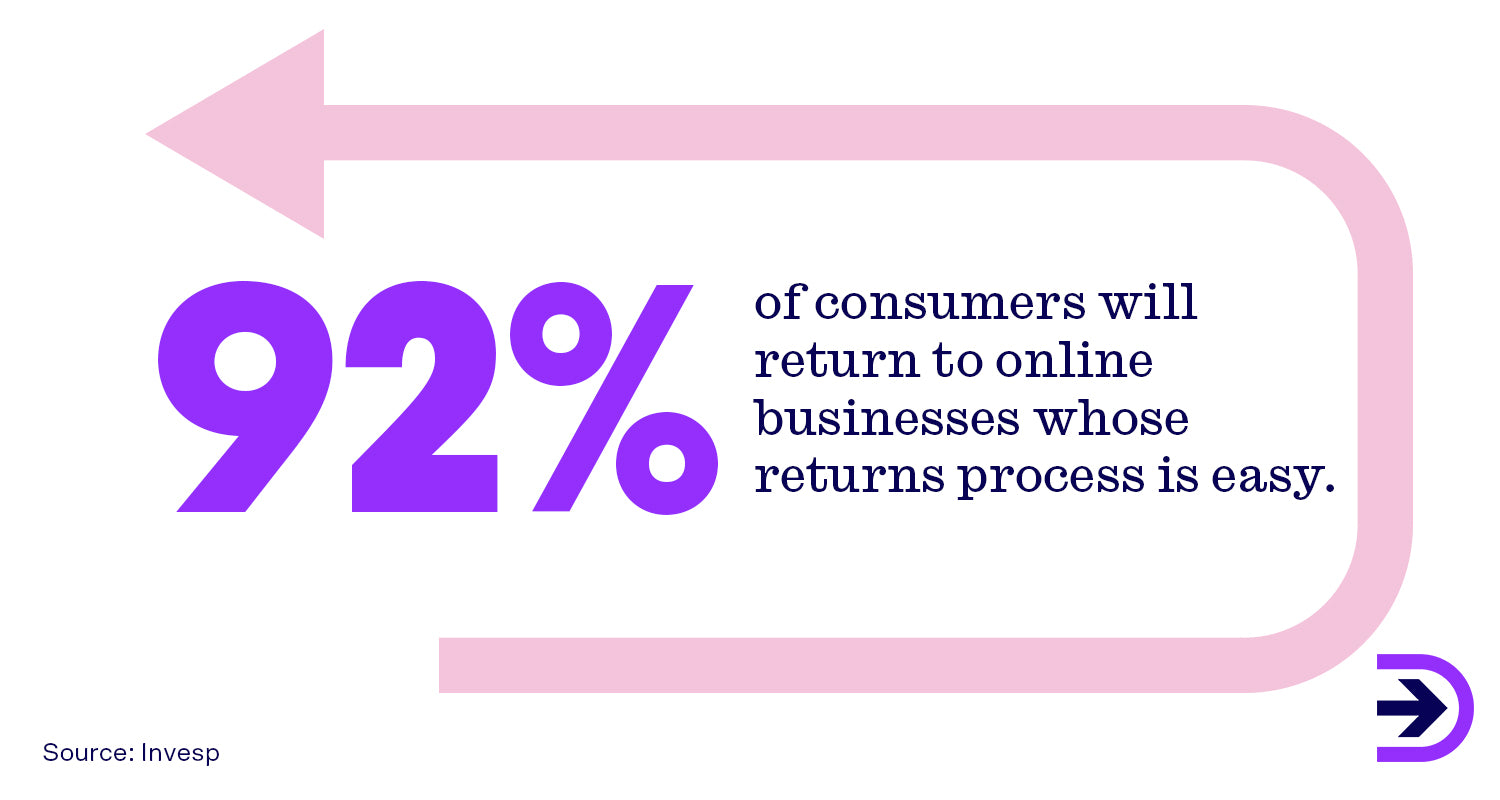
While it might seem counterintuitive, statistics have shown that 92% of consumers will return to online businesses whose returns process is easy. Having an easy returns process puts consumers at ease and lends credibility to your business, especially if you are selling high-ticket items. A complicated or slow returns process may leave customers feeling cheated, leading to poor reviews and poor customer retention. Ecommerce businesses should have a returns policy that is clear, concise, and easy to find. A clear returns policy shows you care about the customer experience and the quality of your product. You should also be prepared to cover the cost of return shipping, especially in cases where you are at fault.
Implement strategies to increase average order value (AOV)
If your customers are only making small purchases, the cost of free shipping can increase significantly. By using strategies to increase the average order value, you can offset these costs by not only making more profit but sending multiple products in a single purchase, saving you shipping fees.
Promotional strategy
An easy way to do this is to only offer customers free shipping on orders above a minimum dollar value, or only for a limited time. You might offer free shipping for first-time customers, or alternatively for loyal customers. Other strategies include offering holiday deals, sending abandoned cart emails, and offering pre-launch deals to hype up your brand in its early stages. Limited times offers also spark urgency, which can increase impulse spending.
Bundling, upselling and cross-promotion
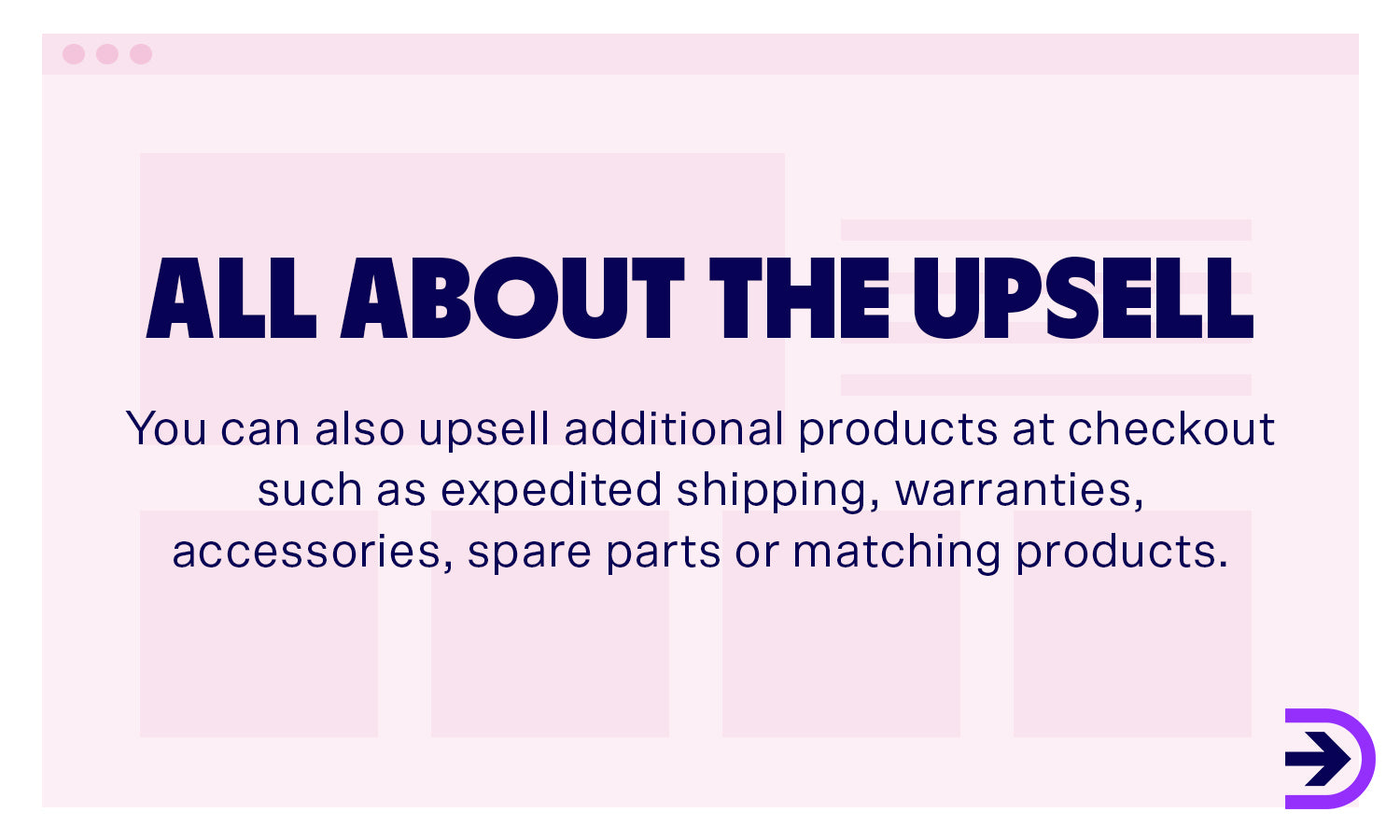
Another great strategy is to recommend another product or service at or before checkout. Amazon does this extremely well with their ‘frequently bought together’ promotions, which bundle similar products together that people may need. You might go a similar route where you have a recommended section, or you can sell sets or bundles as well as individual products. You can also upsell additional products at checkout such as expedited shipping, warranties, accessories, spare parts or matching products. Finally, you might choose to cross-promote other products by partnering with similar but non-competing brands. You can do this by partnering with influencers, guest starring on podcasts, sharing your marketing materials on multiple social media platforms, or writing/hosting guest blogs.
Provide a personalised shopping experience
Create marketing campaigns with personalised messaging. This might be as simple as starting an email with your customer’s name, or you might examine your customer’s purchase history and create a targeted marketing campaign around their shopping habits. If you have a segment of customers that are spending less, find out why and then tempt them back with special offers, new products or cross-promotional bundles.
Offer multiple payment options
Keeping your payment options flexible makes it easier for your customer to purchase whenever, wherever. This includes having options like credit cards and a secure online payment system like Paypal, but it may also mean offering flexible payments like lay-by, instalments, or Afterpay.
Show social proof
When people shop online they tend to look for social proof before buying - that means they read reviews, recommendations, and ways others have used the product. It can also include media coverage (including social media), case studies, testimonials from existing customers, influencer marketing, user-generated content and any awards you may have received. Encourage customers to leave reviews about your products and shopping experience by sending follow-up emails. Engage with your target audience through social media marketing. You can pay for an influencer or affiliate marketing, or you can create your own viral content. Put your best positive reviews, testimonials awards and sales numbers on blast: you want everyone to know how great your brand is!
How to calculate a free shipping minimum threshold for your store
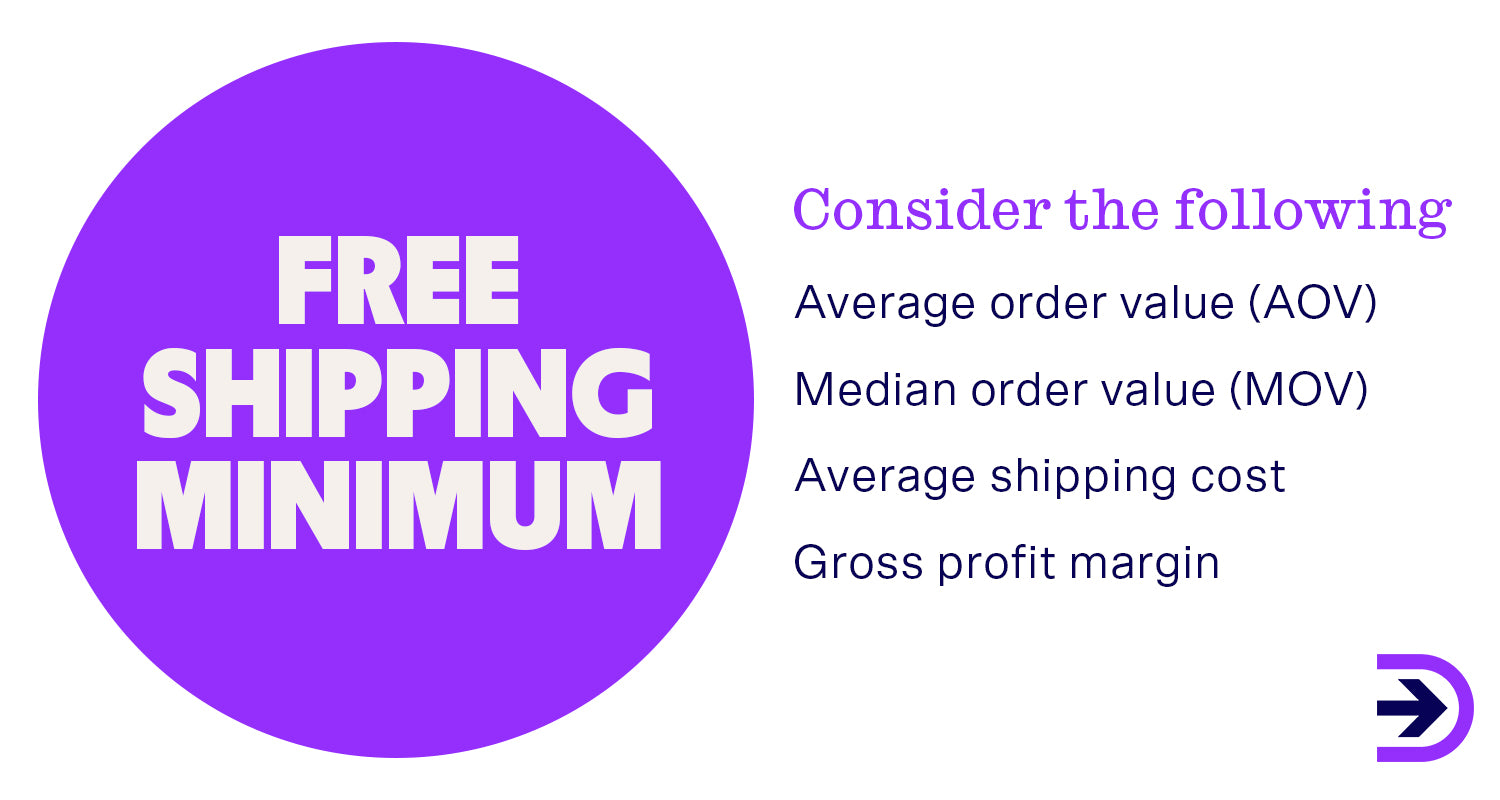
The free shipping minimum threshold is the lowest price you’re prepared to offer free shipping. This price will depend on the cost of shipping, your AOV, transaction fees, and the cost of packaging.
To calculate your free shipping minimum threshold, you should have these numbers handy:
-
Average order value (AOV)
-
Median order value (MOV)
-
Average shipping cost
-
Gross profit margin (total sales - production cost / total sales)
The next step for you is to test proposed minimum cart values.
-
Calculate the difference between your proposed minimum value and your average order value
-
Multiply this amount by your gross profit margin.
-
Subtract this amount from your average shipping cost.
Let’s assume your gross profit margin is 30%, your average order value is $50, your average shipping cost is 9.50 and your proposed minimum value is $55.
55-50=5
5x0.3=1.5
9.5-1.5=8
For every order that reaches this proposed free shipping threshold, your business will be out $8. This is too steep for our liking, so let’s test a free shipping threshold of $80
80-50=15
15x0.3=9
9.5-9=0.5
For every $80 order, we are only losing 50 cents in shipping costs, a much more affordable option. But, depending on our niche and our target market, people may not be willing to pay $30 extra just for free shipping. That’s why it’s important to test your proposed free shipping thresholds and come up with a compromise.
There are many different factors that can influence your ideal minimum free shipping threshold, like rising shipping costs. Customers might be more willing to reach for it if you use our strategies for increasing AOV, or they may be influenced by stellar product images, perceived product value, or loyalty program benefits. Experiment with different minimum order thresholds to determine the right pricing strategy for you.
Benefits of free shipping
Increased trust
Providing free shipping increases trust in the brand. By offering free shipping, it shows that your business understands that shipping costs are a pain point along the customer journey, and you’re willing to go the extra mile. They’re more likely to return to you for future purchases, and choose your busies over competitors who don’t offer free shipping.
Less perceived risk
It also alleviates some of the guilt of impulse spending - if the shopper feels like they are getting a good deal with little risk, they’re less likely to back out of a purchase. They’re also more likely to spend more in a single purchase, as they don’t have to worry about additional delivery fees. This is especially effective for limited-time free shipping offers.
Reduced cart abandonment
Many shoppers are quick to abandon their carts when they see the cost of shipping. Rather than seeing it as a part of the online shopping process, we see shipping as an extra nuisance fee, especially since we tend to see shipping at the end of the shopping process. Free shipping eliminates those “hidden costs” and prevents cart abandonment.
Increases AOV
Free shipping gives the impression that customers are getting their money’s worth, and they are often willing to add more to their cart with free shipping since they won’t be worrying about additional shipping fees. They’ll feel like they’re maximising their savings, while you can use the opportunity to cross-sell, upsell and other AOV techniques.
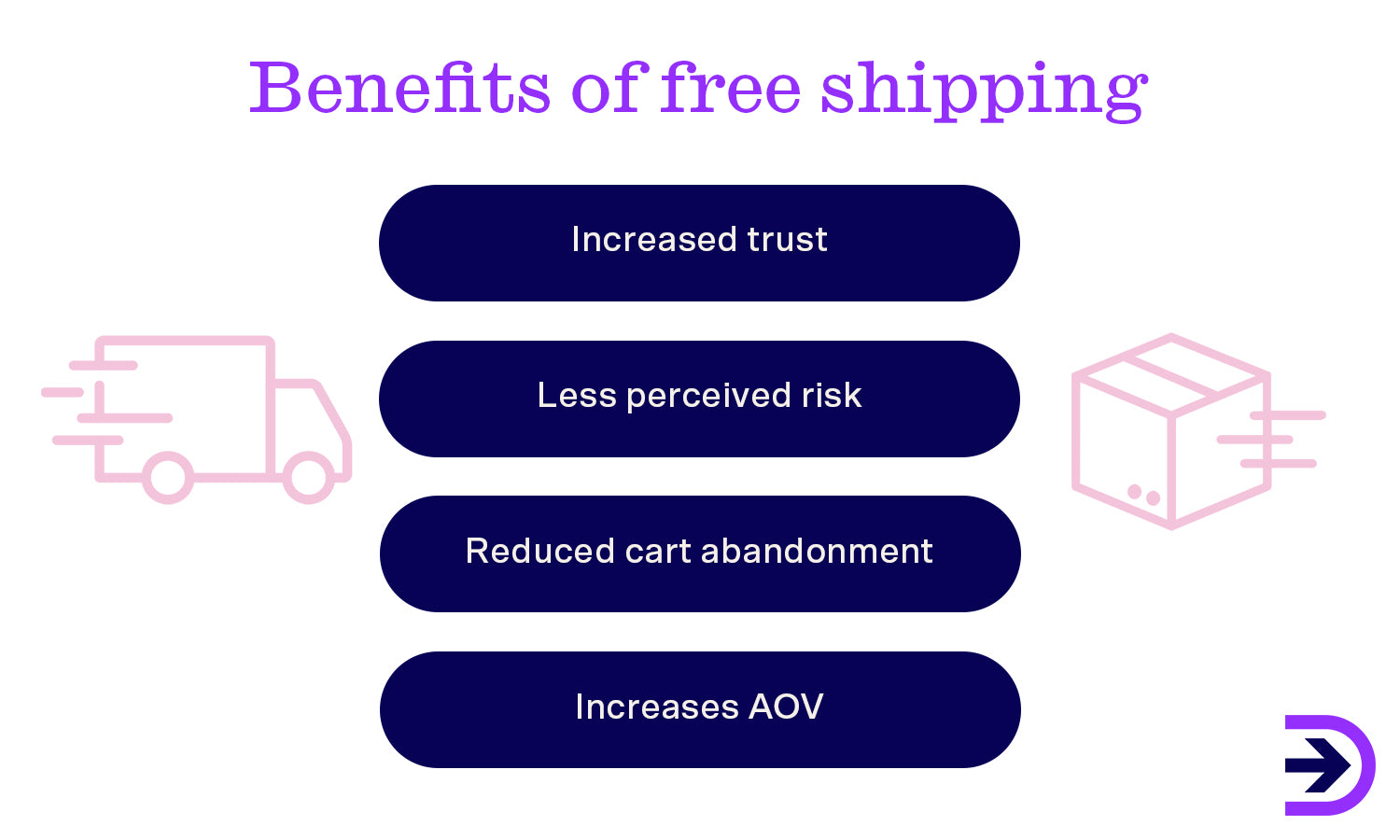
Cons of free shipping
Increased cost
Free shipping inevitably takes a chunk out of your gross profit margin, especially if you are shipping internationally. Shipping costs are just one of the factors, as well as inflation, supply chain issues, and changes in demand. Luckily, as we’ve noted, there are plenty of ways you can increase your profits to make up the difference. With proper testing, you can also find a minimum order threshold that allows you to maximise profits at minimum hassle to your customers.
Increased prices
If your customers are used to paying a certain price for your goods, they may balk at having to suddenly pay more just for free shipping. Whether this is an appropriate avenue for you depends on your product. While we know customers are usually happy to pay a little extra for free shipping, if their favourite $1 product is suddenly $8, they may not be as receptive. No matter what, the product price tag should reflect how much the customer values it - you're unlikely to sell low-cost items at a higher price unless they are special or unique in some way, while a valuable piece of furniture or clothing may go at any price.
Offering free shipping on a budget may make the experience worse
Not all businesses will be able to afford free premium shipping methods, such as same or 2-day shipping. By saving money and choosing the budget-friendly shipping rate, customers may be forced to wait longer for their purchases than usual, which may lead to a worse customer experience. While studies have found that 87% of customers are willing to wait a little longer (5-7 days) for free shipping, longer shipping times could reverse the goodwill that offered free shipping generates.
Is free shipping right for your online business?
Before offering free shipping, there are a few things you should consider regarding your business and profitability.
Consider your AOV
Are you able to increase your orders and average order value enough to make free shipping worth it? Free shipping is a proven method to increase your AOV, but you’ll probably have to do some calculations to determine whether that increase will cover the cost of shipping on it’s own.
Shipping Costs
Online retailers that offer free shipping are more vulnerable to changes in shipping rates. If shipping rates go up, you’ll have to adjust your prices or eat the cost to continue offering unconditional free shipping. You should consider whether your current free shipping strategy could cover increased shipping costs before you offer free shipping permanently.
Transaction Fees
Transaction fees are paid every time you process a customer’s payment. These extra costs already bite into a chunk of your profits, which is why it is preferable to increase your AOV instead of just your number of sales. You need to take into account how much you’re paying in transaction fees before finalising your shipping policy.
Cost of Goods & Packaging
How much does your product cost plus packaging? You’ve already considered this when you set your product prices, but you’ll probably have to augment your retail price to get enough profit at the end of the day.
Will you be profitable?
At the end of the day, is your online store going to get enough profit from offering free shipping to just survive, or to thrive? It’s not just enough to be making a profit for your business to succeed - you need to make enough money to work against rising prices, match your competition, and expand your business (should you desire). If that means you can’t offer free shipping, so be it - there are plenty of other ways to maximise your profits without it.

Should I implement a free shipping strategy?
In today’s competitive online marketplace, free shipping is not just a perk, but for many products and businesses, it is an expectation. There are a lot of reasons why free shipping models might be a detriment to your business, but if you are able to implement a free shipping process, it can truly transform your business into a thriving pinnacle of customer service and give you a competitive advantage. Develop your free shipping strategy today and experience a lifetime of customer loyalty.
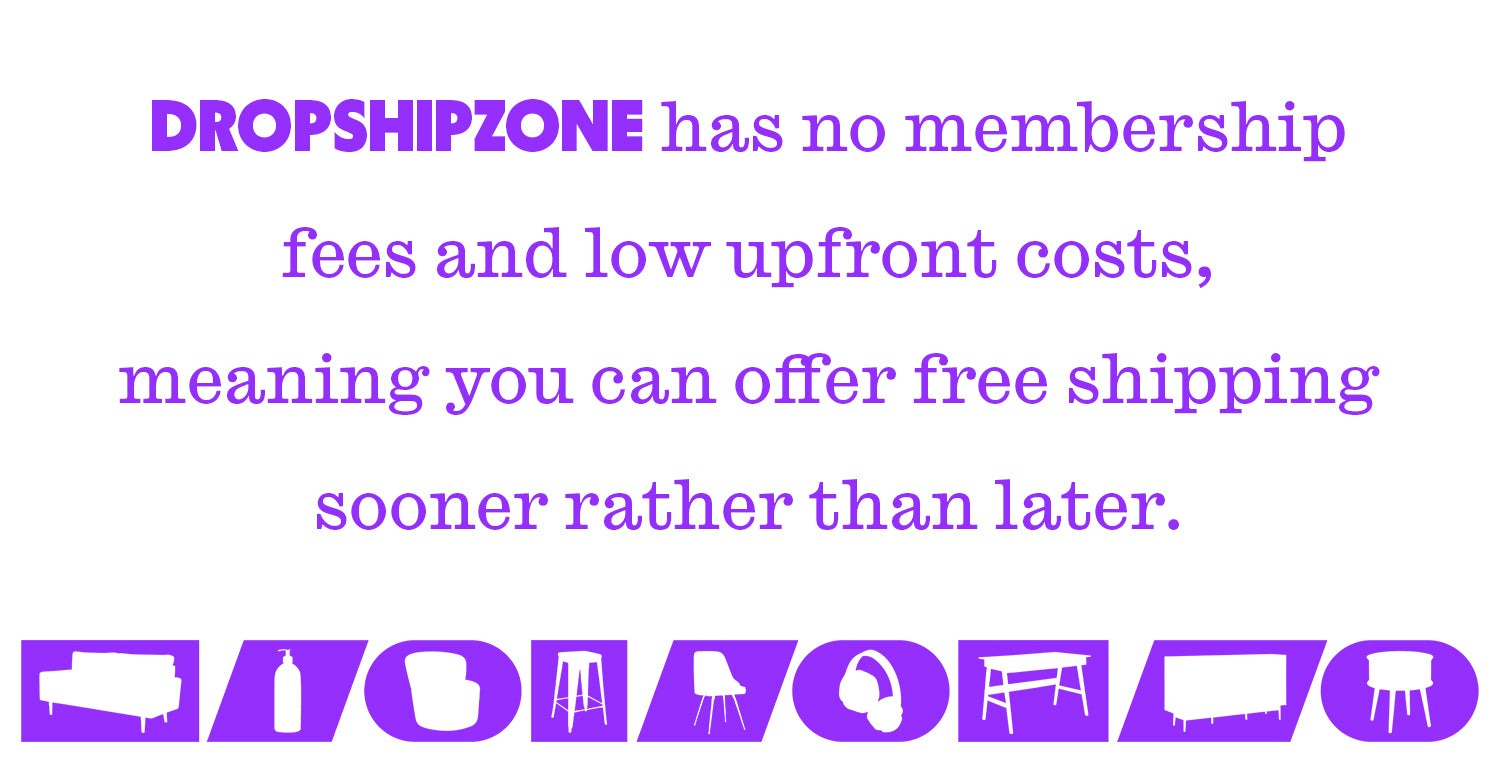
When you buy from Dropshipzone, you’re using our most dedicated courier partners that deliver promptly and efficiently for a reasonable price - one less thing to worry about if you decide to offer free shipping. Since we have no membership fees and low upfront costs, you can start your business on a high note with additional capital, meaning you can offer free shipping sooner rather than later. We also offer hot deals to promote new arrivals and popular products, so you’ll always find a way to maximise profits and offer quality customer service. Join Dropshipzone today and see all the ways we can take your business to the next level.

